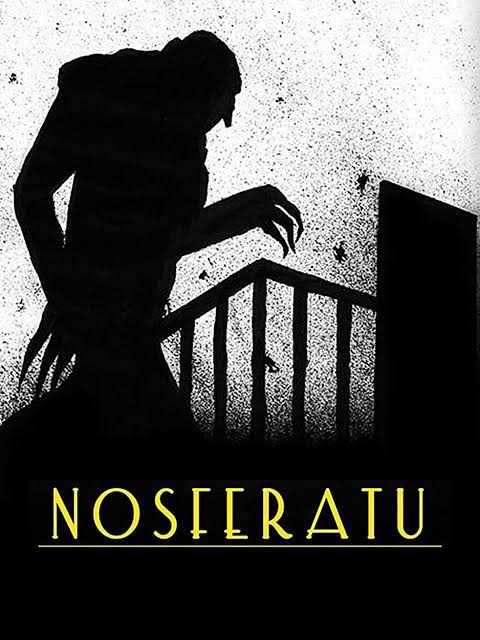Nosferatu: A Symphony of Horror (1922)
6

#19 on IMDb Top 250
Vampire Count Orlok expresses interest in a new residence and real estate agent Hutter's wife.
Producer: Albin Grau
Director: F.W. Murnau
Writer: Bram Stoker, Henrik Galeen
Stars: Max Schreck, Alexander Granach, Gustov von Wangenheim
Country: Germany
Language: Silent
Studio: Prana Film
Genre: Horror
Nosferatu (1922) is frequently in the conversation of most influential horror films ever made. Legally it was ruled as an unauthorized adaptation of Bram Stoker's 1897 novel Dracula, but it also has some key differences that echo throughout cinema today. At the time of release it became a template for the horror genre, influencing many films that came after. We're lucky to even have this film as German courts ruled for all copies of it to be destroyed, nearly robbing us from its artistic guidance.
Producer Albin Grau got the idea for the film during his experiences in WW1. A Serbian farmer told Grau of his father whom he had believed had become an undead vampire. Grau was a lifelong student of the occult, and so when production company Prana Films was formed with the mission to create occult and supernatural themed films, it was a match made in heaven. Unfortunately, Prana Films filed for bankruptcy right after the release of Nosferatu, robbing us of future mystical projects. Grau's passion for the occult manifests in the origin of Orlok as a child of the demon Bilal. This departure from the Dracula source material shows Grau's passion and provides a unique eerie vibe to the project. Another of Grau's departure's from the source material was that Orlok would be killed by sunlight, something that Dracula never inlcuded. This is a detail that has since become a mainstay of the vampire genre.
Grau, director F.W. Murnau, and star Max Schreck all served the Germany army in WWI. Their harrowing experiences during that time clearly left a mark on this film. The plague faced by the citizens of the fictional German town Wisborg is eerily similar to the sweeping death brought by war. Death faced on the battlefield directly influenced cinema's first vampires. F.W. Murnau made his name from his direction over this movie, and it's clear to see why.
While there was criticism at the time for how clear and technically perfect the film's images were, I believe this only foreshadows Murnau's future cinematic achievements. It is said that the film is too brightly lit to appear genuinely scary, and I do have to agree. The flip side, however, is the undenying beauty of each frame. The location and sets are displayed brilliantly and in a way that puts you in the small town and castle yourself.
Finally, I want to touch on the look of Orlok. What an iconic character design. I didn't personally like how the character was used in this film, stalking around the courtyard like a Loony Toones villain, and yet the image of the character standing menacingly in the shadows is perfect. Orlok is creepy and imposing, yet also sickly and unnerving. I love it and would argue I prefer Orlok's design over the later Bela Lugosi Dracula design.
Overall, I enjoyed this film. It has long since lost its ability to scare audiences, but it is still haunting in a way that few other horrors actually reach. A supernatural, omni-present entity that can terrorize a whole town through plague and nightmare is a universal horror that I'm sure will make any audience unneasy.